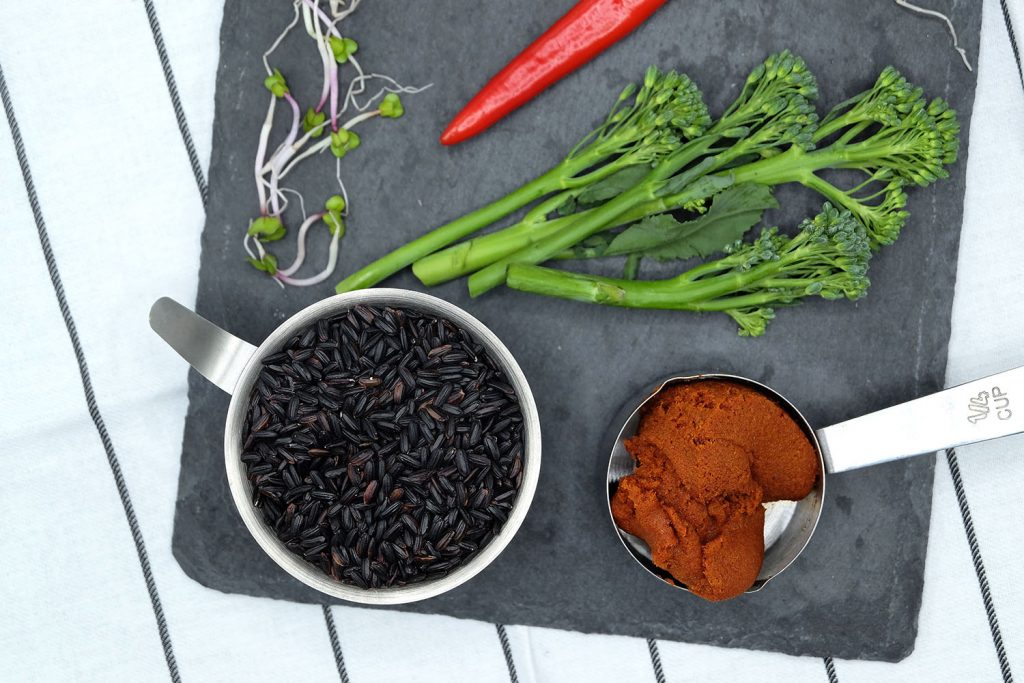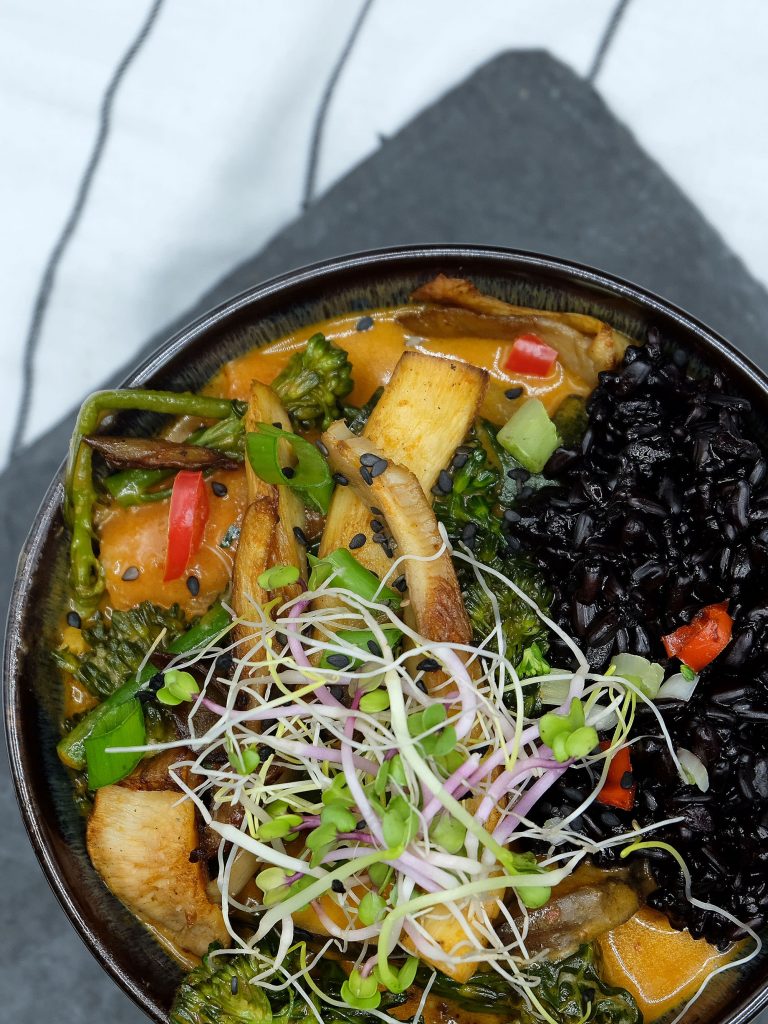Penang Curry has always been my favorite among all Thai curries. Its flavor is closest to red curry, but with a richer, nuttier undertone that makes it irresistibly comforting. When I traveled to Thailand in 2015, I took part in a local cooking class—an experience I’ll never forget. My Thai cooking teacher showed me the traditional way of preparing curry, and let me tell you: it makes all the difference. There’s one crucial step that should never be skipped if you want that deep, authentic flavor—and I’ll show you exactly how to do it in this recipe.
The Thai way:
The very first step has to be adding a thin layer of coconut milk and reducing it until it splits into oil and butter. After this important step, add in your chili paste.
You can see the difference in the final result. If there will be oily bubbles or even a thin oily layer – you have cooked a curry the thai way.
Timing is the key to perfection in this recipe. To avoid having too soft vegetables or a cold fried topping, make sure to cut and prepare everything in advance.
1. The very first step has to be adding a thin layer of coconut milk and reducing it until it splits into oil and butter. After this important step, add in your chili paste. You can see the difference in the final result. If there will be oily bubbles or even a thin oily layer – you have cooked a curry the thai way. Combine the paste with the coconut milk and wait until the reduction is starting. Now add in the garlic, the ginger and 1/2 of the lemongrass. Pour in the coconut milk step by step. So everytime when it start to split the oil.
2. Add in 1/2 tablespoon of Tamari, stir it in the curry until it combines. Add in the carrot, courgette and bimi and let it cook over medium heat. Timing really matters at this point.
3. In a cast iron pan (to get the extra crunchiness) add in the mushrooms and cook them over medium heat until they start loosen up and get soften. Now add in the tamari and the coconut oil and let it fry for half a minute, before flipping it over to the other side, to create the crusty sides. Note: You can use the exact same technique if you want to have tofu or seitan as a fried topping.
4. Now it’s time to add the Pak Choi, half of the chili pepper and the rest of the lemongrass stem(?) to the curry and stir for a view seconds. To still keep the freshness in the greens serve the curry 2 minutes after adding in the leafes.
5. Pour the curry into a serving bowl and garnish it with the remaining chili pepper slices, 1 slice of lime, some slices of the scallion and some fresh sprouts.
Penang Curry

Penang Curry has always been my favorite among all Thai curries. Its flavor is closest to red curry, but with a richer, nuttier undertone that makes it irresistibly comforting. When I traveled to Thailand in 2015, I took part in a local cooking class — an experience I’ll never forget. My Thai cooking teacher showed me the traditional way of preparing curry, and let me tell you: it makes all the difference. There’s one crucial step that should never be skipped if you want that deep, authentic flavor—and I’ll show you exactly how to do it in this recipe.
Ingredients
1/4 cup Penang curry paste
1 can Coconutmilk
Black rice / Rice noodles
1 medium Carrot
1 half Courgette
100g Bimi
1 cup Pak Choi
1 stem Lemongrass
1 Chili pepper
1/2 cup Shiitake mushrooms
1/2 cup Oyster mushrooms
Ginger (fresh)
1 Scallion
Garlic (fresh)
Bell pepper
Soy sprouts
Soy sauce
Tofu:
Kecup Manis
Sesame Oil
Sriracha
Ginger
Garlic
Peanuts
Directions:
1. The very first step has to be adding a thin layer of coconut milk and reducing it until it splits into oil and butter. After this important step, add in your chili paste. You can see the difference in the final result. If there will be oily bubbles or even a thin oily layer – you have cooked a curry the thai way. Combine the paste with the coconut milk and wait until the reduction is starting. Now add in the garlic, the ginger and 1/2 of the lemongrass. Pour in the coconut milk step by step. So everytime when it start to split the oil.
2. Add in 1/2 tablespoon of Tamari, stir it in the curry until it combines. Add in the carrot, courgette and bimi and let it cook over medium heat. Timing really matters at this point.

3. In a cast iron pan (to get the extra crunchiness) add in the mushrooms and cook them over medium heat until they start loosen up and get soften. Now add in the tamari and the coconut oil and let it fry for half a minute, before flipping it over to the other side, to create the crusty sides. Note: You can use the exact same technique if you want to have tofu or seitan as a fried topping.
4. Now it’s time to add the Pak Choi, half of the chili pepper and the rest of the lemongrass stem(?) to the curry and stir for a view seconds. To still keep the freshness in the greens serve the curry 2 minutes after adding in the leafes.
5. Pour the curry into a serving bowl and garnish it with the remaining chili pepper slices, 1 slice of lime, some slices of the scallion and some fresh sprouts.
